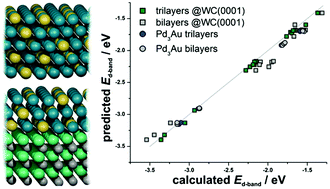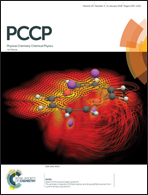Lattice mismatch as the descriptor of segregation, stability and reactivity of supported thin catalyst films†
Abstract
The increasing demand and high prices of advanced catalysts motivate a constant search for novel active materials with reduced contents of noble metals. The development of thin films and core–shell catalysts seems to be a promising strategy along this path. Using density functional theory we have analyzed a number of surface properties of supported bimetallic thin films with the composition A3B (where A = Pt and Pd, and B = Cu, Ag and Au). We focus on the surface segregation, dissolution stability and surface electronic structure. We also address the chemisorption properties of Pd3Au thin films supported by different substrates, by probing the surface reactivity with CO. We find a strong influence of the support in the case of mono- and bilayers, while the surface strain seems to be the predominant factor in determining the surface properties of supported trilayers and thicker films. In particular, we show that the studied properties of the supported trilayers can be predicted from the lattice mismatch between the overlayer and the support. Namely, if the strain dependence of the corresponding quantities for pure strained surfaces is known, the properties of strained supported trilayers can be reliably estimated. The obtained results can be used in the design of novel catalysts and predictions of the surface properties of supported ultrathin catalyst layers.



 Please wait while we load your content...
Please wait while we load your content...